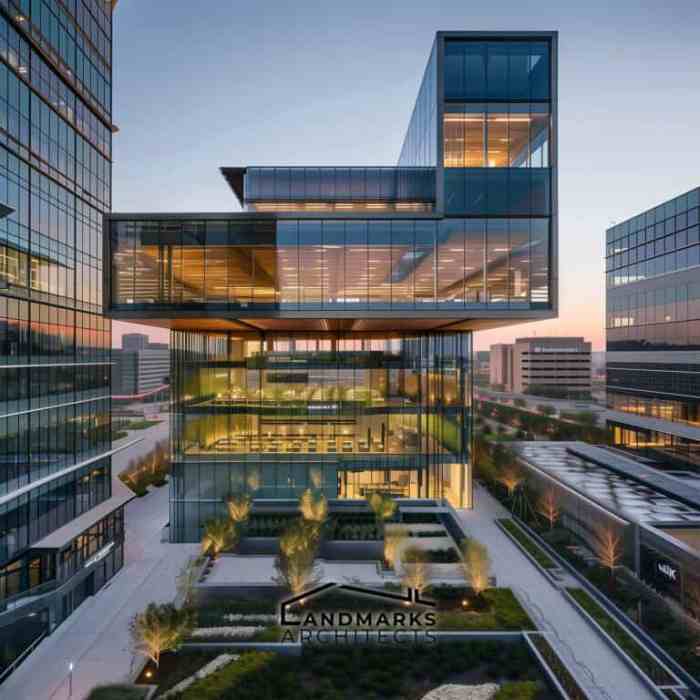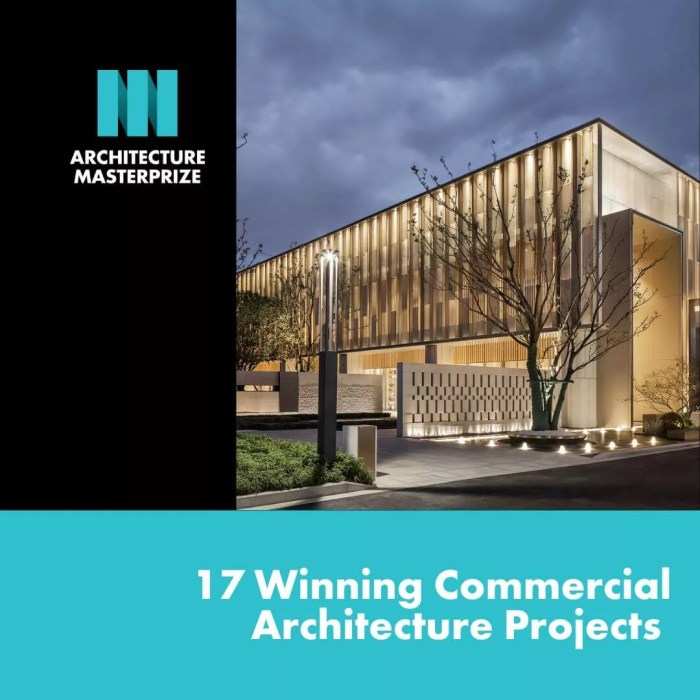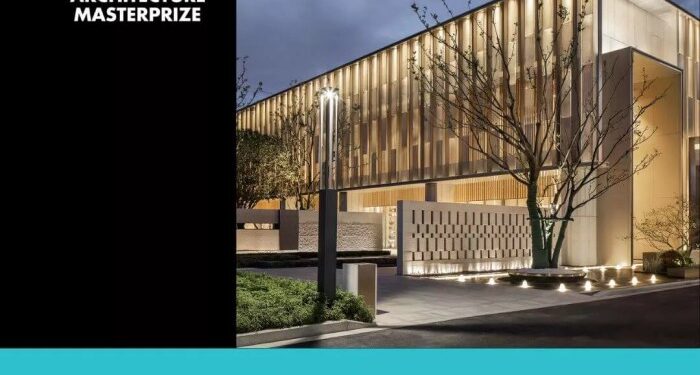Exploring the latest Architectural trends for commercial buildings unveils a dynamic landscape of design innovation and sustainability. This captivating overview delves into the essence of modern architectural trends, shedding light on key factors driving the evolution of commercial building design.
The discussion will touch upon sustainable design practices, technology integration, and the concept of flexible and multi-purpose spaces, offering a comprehensive look at the trends shaping the commercial sector.
Overview of Architectural Trends for Commercial Buildings

In the ever-evolving world of architecture, trends in commercial building design continue to shape the landscape of our cities. From sustainable practices to innovative technologies, the architectural trends in the commercial sector are constantly influenced by various factors.Key factors driving the evolution of architectural trends in commercial buildings include advancements in construction materials, changing environmental regulations, shifting consumer preferences, and the rise of smart building technologies.
These factors push architects and designers to think outside the box and create spaces that are not only visually appealing but also functional and sustainable.Staying updated with modern architectural trends in the commercial sector is crucial for professionals in the industry.
By keeping abreast of the latest developments, architects and designers can ensure that their projects remain relevant and competitive in the market. Additionally, staying informed about architectural trends allows professionals to leverage new technologies and design concepts to create buildings that meet the needs of modern businesses and consumers.
Sustainable Design Practices
In modern commercial building architecture, sustainable design practices play a crucial role in creating environmentally friendly and energy-efficient structures. These practices focus on reducing the negative impact of construction on the environment while maximizing efficiency and longevity.
Eco-Friendly Materials and Technologies
When it comes to sustainable commercial building design, architects and designers are incorporating a variety of eco-friendly materials and technologies. These include:
- Recycled materials such as reclaimed wood, recycled steel, and recycled glass to reduce the demand for new resources and minimize waste.
- Solar panels and green roofs to harness renewable energy sources and improve energy efficiency.
- High-performance insulation and energy-efficient windows to enhance thermal comfort and reduce heating and cooling costs.
- Water-saving fixtures and systems to reduce water consumption and promote efficient use of resources.
Impact on Energy Efficiency and Environmental Conservation
Sustainable design practices have a significant impact on energy efficiency and environmental conservation in commercial buildings. By utilizing eco-friendly materials and technologies, these buildings can:
- Reduce energy consumption and lower operating costs over the long term.
- Minimize greenhouse gas emissions and contribute to combating climate change.
- Promote a healthier indoor environment for occupants by using non-toxic materials and improving air quality.
- Enhance the overall sustainability and resilience of the building, ensuring its longevity and adaptability to changing environmental conditions.
Technology Integration
Technology integration plays a crucial role in shaping the design and functionality of modern commercial buildings. By incorporating smart building systems, IoT (Internet of Things), and automation, architects and designers are able to enhance efficiency, sustainability, and user experience within these spaces.
Smart Building Systems
- Smart building systems utilize sensors, actuators, and data analytics to optimize energy usage, lighting, temperature control, and security within commercial buildings.
- These systems can automatically adjust settings based on occupancy levels, weather conditions, and other factors to create a more comfortable and efficient environment for occupants.
- Examples include smart thermostats, occupancy sensors, and lighting controls that help reduce energy costs and minimize environmental impact.
Internet of Things (IoT)
- The IoT enables various devices and systems to connect and communicate with each other, allowing for seamless integration and automation of processes within commercial buildings.
- Through IoT technology, building systems can be monitored and controlled remotely, improving maintenance efficiency and overall building performance.
- IoT devices such as smart locks, security cameras, and HVAC systems contribute to increased security, operational efficiency, and occupant comfort.
Automation in Commercial Buildings
- Automation technologies such as building management systems (BMS) and centralized control systems streamline operations and maintenance tasks, reducing manual intervention and human error.
- These systems can schedule routine maintenance, optimize resource usage, and provide real-time monitoring of building performance for proactive decision-making.
- Examples of automation in commercial buildings include automated access control, HVAC scheduling, and predictive maintenance algorithms that enhance the overall efficiency and productivity of the space.
Flexible and Multi-Purpose Spaces
Flexible and multi-purpose spaces in commercial building design refer to areas that can easily be adapted and transformed to cater to different needs and functions. These spaces are designed with versatility in mind, allowing for seamless transitions between various uses.
Benefits of Designing Adaptable Spaces
- Efficient Use of Space: Flexible spaces maximize the use of square footage by serving multiple purposes, eliminating the need for separate rooms for each function.
- Cost-Effectiveness: By designing spaces that can accommodate different activities, businesses can save on construction and renovation costs in the long run.
- Enhanced User Experience: Users of the building benefit from the convenience and adaptability of multi-purpose spaces, creating a more dynamic and engaging environment.
Examples of Successful Implementations
One notable example of successful implementation of flexible spaces is The Edge in Amsterdam, known for its innovative office design. The building features open-plan work areas that can easily be reconfigured to accommodate various activities such as meetings, events, and collaborative work.
End of Discussion

In conclusion, Architectural trends for commercial buildings reflect a harmonious blend of creativity, sustainability, and functionality. Embracing these trends not only enhances the aesthetic appeal of commercial spaces but also contributes to a more efficient and eco-friendly built environment.
FAQ Summary
How do sustainable design practices impact energy efficiency in commercial buildings?
Sustainable design practices optimize energy usage through efficient building systems and eco-friendly materials, resulting in reduced energy consumption and operational costs.
What are some examples of innovative technological solutions used in modern commercial building architecture?
Examples include smart building systems for energy management, IoT devices for real-time monitoring, and automation for enhanced operational efficiency.
Why is the concept of flexible and multi-purpose spaces gaining popularity in commercial building design?
Flexible spaces cater to evolving business needs, promote efficient space utilization, and offer versatility for different functions, making them a valuable asset in commercial settings.


